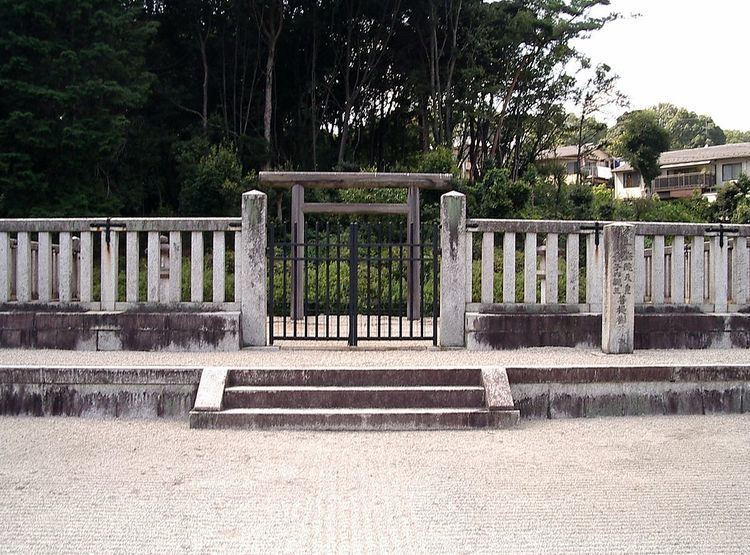Coronation 1016 Mother Fujiwara no Shoshi Role Sovereign Parents Emperor Ichijo Grandparents Emperor En\'yu | Predecessor Sanjo Father Ichijo Name Emperor Go-Ichijo Died May 15, 1036, Heian-kyo Children Princess Shoshi | |
 | ||
Burial Bodaijuin no misasagi (菩提樹院陵) (Kyoto) Similar People Emperor Murakami, Emperor Go‑Kameyama, Emperor Uda | ||
Emperor Go-Ichijō (後一条天皇, Go-Ichijō-tennō, October 12, 1008 – May 15, 1036) was the 68th emperor of Japan, according to the traditional order of succession.
Contents
- Traditional narrative
- Events of Go Ichijs life
- Kugy
- Eras of Go Ichijs reign
- Consort and children
- References

Go-Ichijō's reign spanned the years from 1016 through 1036.
This 11th century sovereign was named after Emperor Ichijō and go- (後), translates literally as "later;" and thus, he is sometimes called the "Later Emperor Ichijō", or, in some older sources, may be identified as " Emperor Ichijō, the second."
Traditional narrative
Before his ascension to the Chrysanthemum Throne, his personal name (imina) was Atsuhira -shinnō (敦成親王). He was also known as Atsunari-shinnō.
Atsuhira was the second son of Emperor Ichijō. His mother, Fujiwara no Akiko/Shōshi (藤原彰子) (988–1074), was a daughter of Fujiwara no Michinaga. In her later years, Ichijō's chūgo consort was known as Jōtō-mon In (上東門院).
Events of Go-Ichijō's life
Atsuhira-shinnō was used as a pawn in Imperial court politics when he was only a child.
Atsuhira became emperor at the age of 8, upon the abdication of his first cousin once removed, Emperor Sanjō.
During the initial years of Go-Ichijō's reign, Fujiwara no Michinaga actually ruled from his position as sesshō (regent).
The actual site of Go-Ichijō's grave is known. This emperor is traditionally venerated at a memorial Shinto shrine (misasagi) at Kyoto.
The Imperial Household Agency designates this location as Go-Ichijō's mausoleum. It is formally named Bodaijuin no misasagi.
Kugyō
Kugyō (公卿) is a collective term for the very few most powerful men attached to the court of the Emperor of Japan in pre-Meiji eras. Even during those years in which the court's actual influence outside the palace walls was minimal, the hierarchic organization persisted.
In general, this elite group included only three to four men at a time. These were hereditary courtiers whose experience and background would have brought them to the pinnacle of a life's career. During Go-Ichijō's reign, this apex of the Daijō-kan included:
Eras of Go-Ichijō's reign
The years of Go-Ichijō's reign are more specifically identified by more than one era name or nengō.
Consort and children
Go-Ichijō had one Empress and two Imperial daughters.
Empress (chūgū): Fujiwara no Ishi (藤原威子) (999–1036), third daughter of Fujiwara no Michinaga
